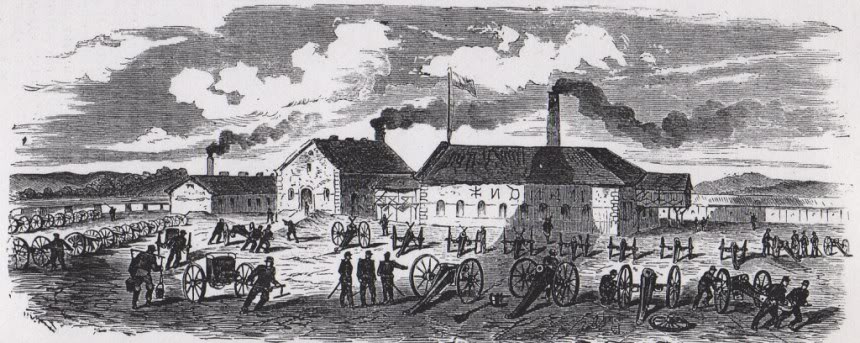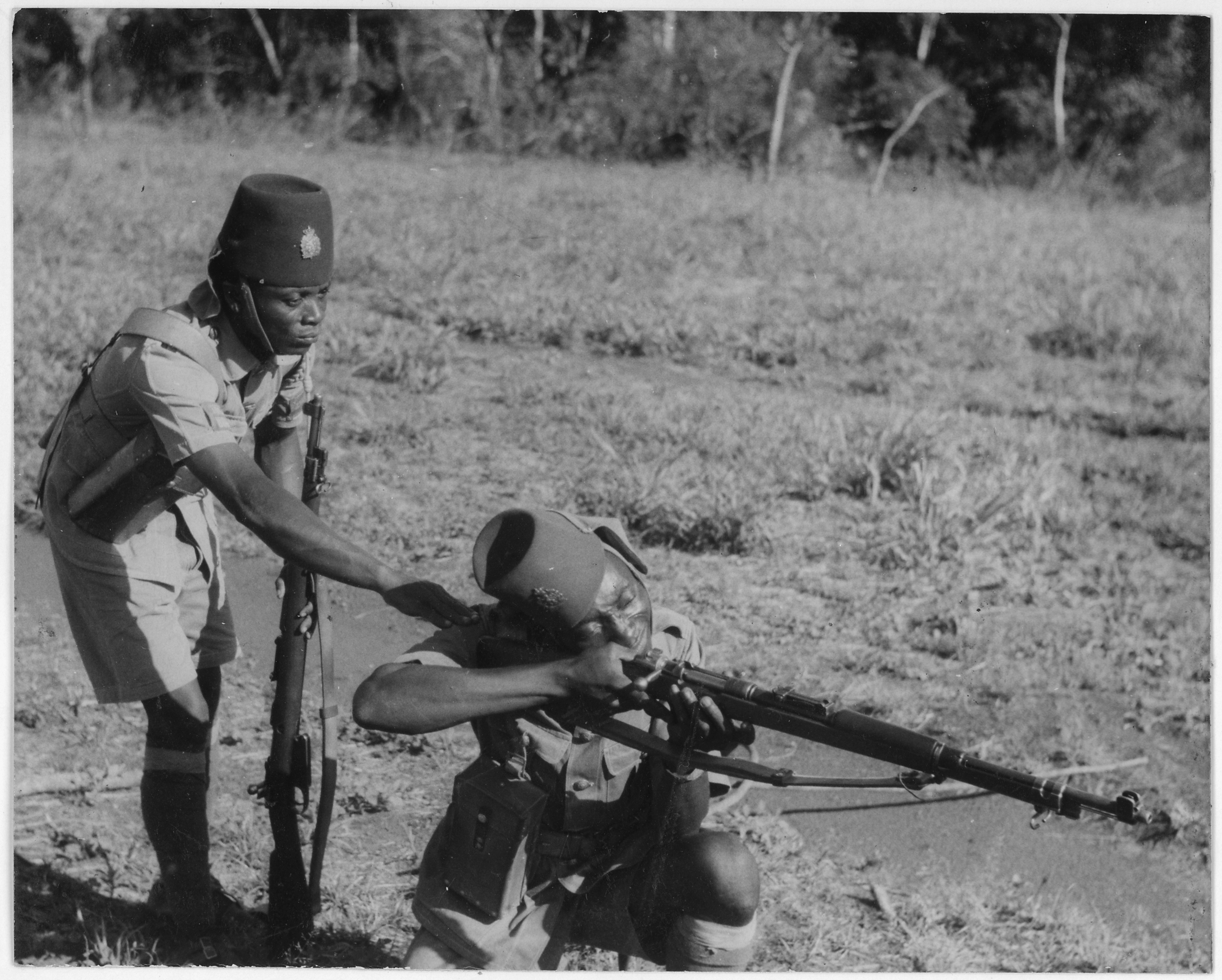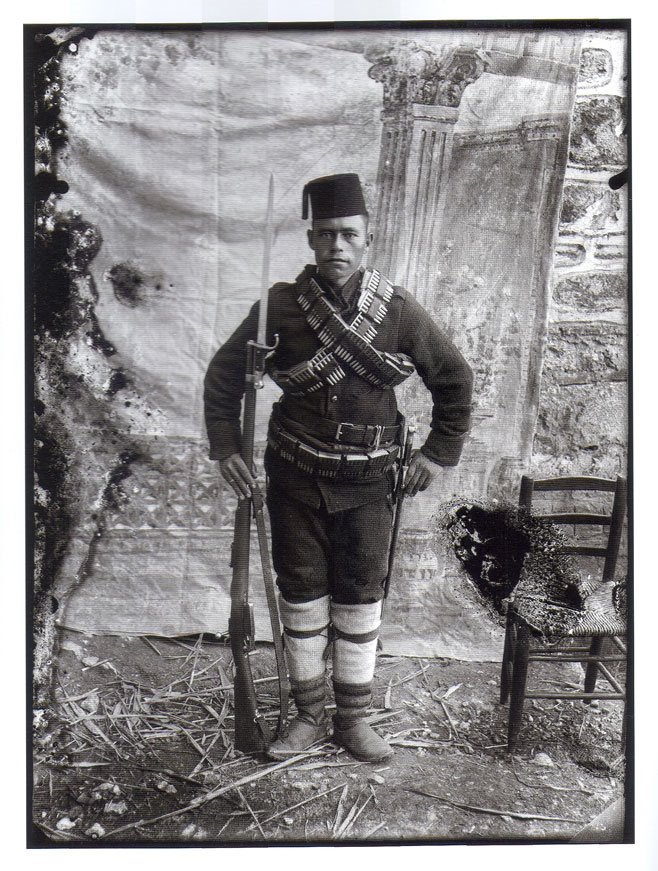|
Mauser-Koka
In 1880, Serbian Major Kosta "Koka" Milovanović (Коста "Кока" Миловановић) developed an updated version of the Mauser Model 1871, still single-shot, but chambered in its unique 10.15×63R caliber. It had unique additions in that it had a bolt guide (much like the M1870 Italian Vetterli) and the "progressive rifling" that was developed by Koka. The Kingdom of Serbia adopted the rifle in 1880. It was designated Serbian Model 1878/80, also known as Mauser-Koka, Mauser-Milovanović, and known in Serbian as Kokinka (Кокинка). The grooves reduced in diameter from breech to muzzle. The muzzle velocity of the Mauser-Milanović was . It saw first combat in the Serbo-Bulgarian War. Approximately 110,000 Mauser-Milovanović rifles entered the Serbian arsenal. It was further developed in 1907. Mauser-Koka 1884 The Mauser Model 1884 "Artillery Carbine" was produced in 1884 in 4,000 units at the Oberndorf plant for the use of the Serbian cavalry. It was based on the ... [...More Info...] [...Related Items...] OR: [Wikipedia] [Google] [Baidu] |
Mauser Model 1871
The Mauser Model 1871 adopted as the ''Gewehr'' 71 or ''Infanterie-Gewehr'' 71, or "Infantry Rifle 71" ("I.G.Mod.71" was stamped on the rifles themselves) was the first rifle model in a distinguished line designed and manufactured by Paul Mauser and Wilhelm Mauser of the Mauser company and later mass-produced at Spandau arsenal. History Paul Mauser developed his bolt-action rifle from 1867 to 1871. In 1870–71 trials with 2,500 test rifles took place, with the M1869 Bavarian Werder being the Mausers' chief competitor. The Mauser was provisionally adopted on 2 December 1871, pending the development of an appropriate safety. With support from the government's Spandau arsenal, the improvements to the safety mechanism were completed and the rifle was formally accepted on 14 February 1872 as Infantry Rifle Model 1871 by the German Empire, excluding Bavaria that adopted the Werder. The rifles were issued to the German Army from late 1873 to 1875, with approximately 1.82 million r ... [...More Info...] [...Related Items...] OR: [Wikipedia] [Google] [Baidu] |
Royal Serbian Army
The Army of the Kingdom of Serbia ( sr-cyr, Војска Краљевине Србије, Vojska Kraljevine Srbije), known in English as the Royal Serbian Army, was the army of the Kingdom of Serbia that existed between 1882 and 1918, succeeding the Armed Forces of the Principality of Serbia and preceding the Royal Yugoslav Army. Organization Field armies * First Army (Serbia) * Second Army (Serbia) * Third Army (Serbia) * Timok Army * Užice Army Orders of battle * Order of battle of the Serbian Army in the First Balkan War * Order of battle of the Serbian Army in World War I Wars Military equipment Armament Uniform * Šajkača See also * First Serbian Volunteer Division * Serbian Chetnik Organization * Serbian Army The Serbian Army ( sr-cyr, Копнена војска Србије, Kopnena vojska Srbije, lit=Serbian Land Army) is the land-based and the largest component of the Serbian Armed Forces. History Originally established in 1830 as the Army of Pr .. ... [...More Info...] [...Related Items...] OR: [Wikipedia] [Google] [Baidu] |
Mauser Rifles
Mauser, originally Königlich Württembergische Gewehrfabrik ("Royal Württemberg Rifle Factory"), was a German arms manufacturer. Their line of bolt-action rifles and semi-automatic pistols has been produced since the 1870s for the German armed forces. In the late 19th and early 20th centuries, Mauser designs were also exported and licensed to many countries which adopted them as military and civilian sporting firearms. The Gewehr 98 in particular was widely adopted and copied, and is the foundation of many of today's sporting bolt-action rifles. History King Frederick I founded the enterprise as Königliche Waffen Schmieden (literally: Royal Weapons Forges) on 31 July 1811. Originally located partly at Ludwigsburg and partly in Christophsthal, the factory transferred to the former Augustine Cloister in Oberndorf am Neckar, where Andreas Mauser worked as the master gunsmith. Of his seven sons who worked with him there, Peter Paul Mauser showed an outstanding ability to deve ... [...More Info...] [...Related Items...] OR: [Wikipedia] [Google] [Baidu] |
Mauser
Mauser, originally Königlich Württembergische Gewehrfabrik ("Royal Württemberg Rifle Factory"), was a German arms manufacturer. Their line of bolt-action rifles and semi-automatic pistols has been produced since the 1870s for the German armed forces. In the late 19th and early 20th centuries, Mauser designs were also exported and licensed to many countries which adopted them as military and civilian sporting firearms. The Gewehr 98 in particular was widely adopted and copied, and is the foundation of many of today's sporting bolt-action rifles. History King Frederick I founded the enterprise as Königliche Waffen Schmieden (literally: Royal Weapons Forges) on 31 July 1811. Originally located partly at Ludwigsburg and partly in Christophsthal, the factory transferred to the former Augustine Cloister in Oberndorf am Neckar, where Andreas Mauser worked as the master gunsmith. Of his seven sons who worked with him there, Peter Paul Mauser showed an outstanding ability to ... [...More Info...] [...Related Items...] OR: [Wikipedia] [Google] [Baidu] |
Zastava Arms
Zastava Arms ( sr-Cyrl-Latn, Застава oружје, Zastava oružje) is a Serbian manufacturer of firearms and artillery, based in Kragujevac, Serbia. It was founded in 1853 when it cast its first cannon. It is the leading producer of firearms in Serbia and is a large contributor to the local defense industry. Zastava Arms produces and exports a wide variety of products to over forty countries, including the popular Zastava M70, a Kalashnikov rifle. History The successful production of four four-pound cannons and two short howitzers on 27 October 1853 is date of foundation of Zastava Arms in Kragujevac. Between 1856 and 1860, the facilities in Kragujevac received many upgrades to its manufacturing system, eventually allowing the plant to produce weapons with full parts interchangeability. In 1878, one of the main priorities became the modernization of armaments. Serbian rifle „Piboduša“ Model 1870 Peabody became obsolete with their large 14,9mm caliber. After a rese ... [...More Info...] [...Related Items...] OR: [Wikipedia] [Google] [Baidu] |
Kingdom Of Serbia
The Kingdom of Serbia ( sr-cyr, Краљевина Србија, Kraljevina Srbija) was a country located in the Balkans which was created when the ruler of the Principality of Serbia, Milan I, was proclaimed king in 1882. Since 1817, the Principality was ruled by the Obrenović dynasty (replaced by the Karađorđević dynasty for a short time). The Principality, under the suzerainty of the Ottoman Empire, ''de facto'' achieved full independence when the last Ottoman troops left Belgrade in 1867. The Congress of Berlin in 1878 recognized the formal independence of the Principality of Serbia, and in its composition Nišava, Pirot, Toplica and Vranje districts entered the South part of Serbia. In 1882, Serbia was elevated to the status of a kingdom, maintaining a foreign policy friendly to Austria-Hungary. Between 1912 and 1913, Serbia greatly enlarged its territory through engagement in the First and Second Balkan Wars— Sandžak-Raška, Kosovo Vilayet and Vardar Mace ... [...More Info...] [...Related Items...] OR: [Wikipedia] [Google] [Baidu] |
Mauser Model 1895
The Mauser Model 1895 is a bolt operated magazine fed rifle using the 7×57mm Mauser cartridge. It was exported to many overseas powers, including the Chilean forces which adopted as the Fusil Mauser Chileno Mo 1895. It is the first major modification of the Mauser Model 1893 and was produced by Deutsche Waffen und Munitionsfabriken, known as DWM, and Ludwig Loewe Company from 1895 to 1900. History First supplied by the Ludwig Loewe & Co during 1895-1896 then later by the DWM (1897-1900), the Mauser model 1895 first made its appearance during a small arms race between Argentina and Chile in 1896 and 1898. In this period, over 80,000 Model 1895 rifles and 30,000 Model 1895 carbines were shipped and deployed to the Chilean army. The Model 1895 was also deployed to republic of the Orange Free State (Oranje Vrij Staat) and the South African Republic (The Z.A.R. but more commonly known as the “Transvaal”) by Ludwig Loewe and Co. (and later DMW) shortly after the Jameson Raid in ... [...More Info...] [...Related Items...] OR: [Wikipedia] [Google] [Baidu] |
Serbian Model 1908
Serbian may refer to: * someone or something related to Serbia, a country in Southeastern Europe * someone or something related to the Serbs, a South Slavic people * Serbian language * Serbian names See also * * * Old Serbian (other) * Serbians * Serbia (other) * Names of the Serbs and Serbia Names of the Serbs and Serbia are terms and other designations referring to general terminology and nomenclature on the Serbs ( sr, Срби, Srbi, ) and Serbia ( sr, Србија/Srbija, ). Throughout history, various endonyms and exonyms have bee ... {{Disambiguation Language and nationality disambiguation pages ... [...More Info...] [...Related Items...] OR: [Wikipedia] [Google] [Baidu] |
Gewehr 98
The Gewehr 98 (abbreviated G98, Gew 98, or M98) is a German bolt-action rifle made by Mauser, firing cartridges from a five-round internal clip-loaded magazine. It was the German service rifle from 1898 to 1935, when it was replaced by the Karabiner 98k, a shorter weapon using the same basic design. The Gewehr 98 action, using a stripper clip loaded with the 7.92×57mm Mauser cartridge, successfully combined and improved several bolt-action engineering concepts which were soon adopted by many other countries, including the United Kingdom, United States, and Japan. The Gewehr 98 replaced the earlier Gewehr 1888 as the main German service rifle. It first saw combat in the Chinese Boxer Rebellion and was the main German infantry service rifle of World War I. The Gewehr 98 saw further military use by the Ottoman Empire and Nationalist Spain. History The Gewehr 98 was introduced into German military service in 1898, replacing the Gewehr 1888. The bolt-action design was the latest ... [...More Info...] [...Related Items...] OR: [Wikipedia] [Google] [Baidu] |
Yugoslavian Model 90
The Mauser Model 1889 is a bolt-action rifle of Belgian origin. It became known as the 1889 Belgian Mauser, 1891 Argentine Mauser, and 1890 Turkish Mauser. History After the Mauser brothers finished work on the Model 71/84 in 1880, the design team set out to create a small caliber repeater that used smokeless powder. Because of setbacks brought on by Wilhelm Mauser's death, they failed to have the design completed by 1882, and the German Rifle Test Commission (Gewehr-Prüfungskommission) was formed. The commission preferred to create their own design. Paul Mauser created two different variations of the same rifle, one with a stock strengthened with a barrel shroud and a traditional design following the layout of the 71 series in hope he might be able to overturn the commission's decision, or at least sell his design to the Kingdom of Bavaria, which adopted its own arms. The two rifles became known as the 89 Belgian (with a barrel shroud) and the 91 Argentine (with a 71 layout) M ... [...More Info...] [...Related Items...] OR: [Wikipedia] [Google] [Baidu] |
M24 Series
The FN Model 24 series is a line of Mauser Gewehr 98 pattern bolt-action battle rifles produced by the Belgian Fabrique Nationale. They are similar to the Czech vz. 24 rifle, featuring open sights, 8×57mm IS chambering, carbine-length barrels, hardwood stocks, and straight bolt handles. History After World War I and the German defeat, Belgium manufactured derivative of the Mauser 98, slightly modified. The rifle series was modified depending on each customer's needs. The designation Mle 24/30 is incorrect strictly speaking, since the Model 24 rifle is different from the Model 30. The confusion comes from the fact both versions were marketed at the same time in the 1930s. The last rifles were produced in 1964. Belgium The Belgian Armed Forces did not order the FN Mle 24/30 before the war. After the war, some training carbines Mle 24 in .22 Long Rifle were produced for the Belgian Army, the Belgian Navy and the colonial Force Publique. The Belgian and Congolese forces also re ... [...More Info...] [...Related Items...] OR: [Wikipedia] [Google] [Baidu] |
Yugoslavian Model 03
The Mauser Model 1889 is a bolt-action rifle of Belgian origin. It became known as the 1889 Belgian Mauser, 1891 Argentine Mauser, and 1890 Turkish Mauser. History After the Mauser brothers finished work on the Model 71/84 in 1880, the design team set out to create a small caliber repeater that used smokeless powder. Because of setbacks brought on by Wilhelm Mauser's death, they failed to have the design completed by 1882, and the German Rifle Test Commission (Gewehr-Prüfungskommission) was formed. The commission preferred to create their own design. Paul Mauser created two different variations of the same rifle, one with a stock strengthened with a barrel shroud and a traditional design following the layout of the 71 series in hope he might be able to overturn the commission's decision, or at least sell his design to the Kingdom of Bavaria, which adopted its own arms. The two rifles became known as the 89 Belgian (with a barrel shroud) and the 91 Argentine (with a 71 layout) M ... [...More Info...] [...Related Items...] OR: [Wikipedia] [Google] [Baidu] |



.jpg)


_in_Léopoldville%2C_1960.jpg)
